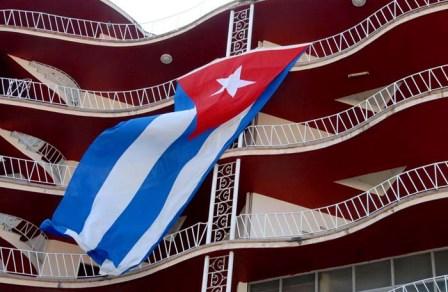Constitutional Order & Cuba’s Constitution (II)
By Dmitri Prieto

The Cuban Constitution of 1976 underwent two important modifications: in 1992, when changes were made through a series of provisions, such as the introduction of direct elections (with closed lists of candidates) for provincial delegates and deputies to the Parliament, as well as the State assuming a laic (non-religious, non-atheist) character.
Then, in 2002, 8,198,237 voting age citizens were called upon to sign a reform petition, and the National Assembly declared the socialist system in Cuba as inviolable, which made blanket change of the constitution impossible (only partial reforms would be permitted).
Despite the seemingly bizarre character of such a stipulation, similar provisions exist in other countries (in the Federal Republic of Germany, for example). What many people questioned, however, was the method of implementing that reform and the legitimacy of the massive public act of collecting signatures under the conditions that exist in Cuba.
This was also a response to an attempted legislative initiative based on the articles of the constitution. Organizers of the so-called Varela Project collected more than 10,000 signatures requesting Parliament introduce a constitutional reform of a liberal-democratic character.
Cuban author René Fidel González, in a book that in 2003 was awarded an important state prize (Pinos Nuevos), affirmed that it would have been more legitimate had the National Assembly recognized the Varela Project initiative and voted it down in accordance with its own procedures. Nevertheless, political will prevailed.
Despite this, at a more recent date Fidel Castro reintroduced the issue of the invulnerability of socialism. He delivered a speech at the University of Havana in November 2005 in which he said the revolution could be reversed “from within,” which generated wide discussion among the Cuban and Latin American left.
Many authors continue to maintain that the constitution currently in force (that of 1976, modified in 1992 and 2002) retains a content marked by provisionality. If we compare it to the recently approved charters in Latin American countries such as Venezuela, Bolivia and Ecuador, we can see that Cuba’s is a constitution that is closer to those of the former European socialist camp.
It is like a hinge that divides in two the revolutionary-constitutional periods of 20th century Latin America. In this way, for example, the Cuban Constitution maintains the principle of the unity of power (initially introduced in the USSR, and that also operated in other very different types of countries, e.g. Franco’s Spain). In contrast, the new constitutions across the continent envisage multiple powers that must be balanced (in this way expanding – by way of Simón Bolívar’s legacy – the tri-partition that exists in the classical tradition that goes back to Founding Fathers in the United States).
The same can be said regarding the protection of citizens’ rights and the safeguarding of peoples’ participation, as well as the way in which those other Latin American constitutions were widely discussed and approved.
Will the future afford us in Cuba a constitution that is closer in line with what is occurring throughout in the Americas? What needs to be done for this to happen? To learn this, we must attentively re-read the passage from Rosa Luxemburg:
“Any legal constitution is no more than a product of revolution. In the history of classes, the revolution is the creative political act, while legislation only expresses the political survival of a society. Legal reform does not possess its own impulse, independently of revolution, but rather in every historical period it moves in the direction guided by the thrust of the preceding revolution and over that time that the impulse lasts. Stated more concretely: It only moves within the context of the social order established by the last revolution.”






Dimitro..u are correct
Any legal constitution is no more than a product of revolution. In the history of classes, the revolution is the creative political act, while legislation only expresses the political survival of a society. Legal reform does not possess its own impulse, independently of revolution, but rather in every historical period it moves in the direction guided by the thrust of the preceding revolution and over that time that the impulse lasts. Stated more concretely: It only moves within the context of the social order established by the last revolution.”.”
AND IT SHOULD, IT MUST! with few changes vs transformation